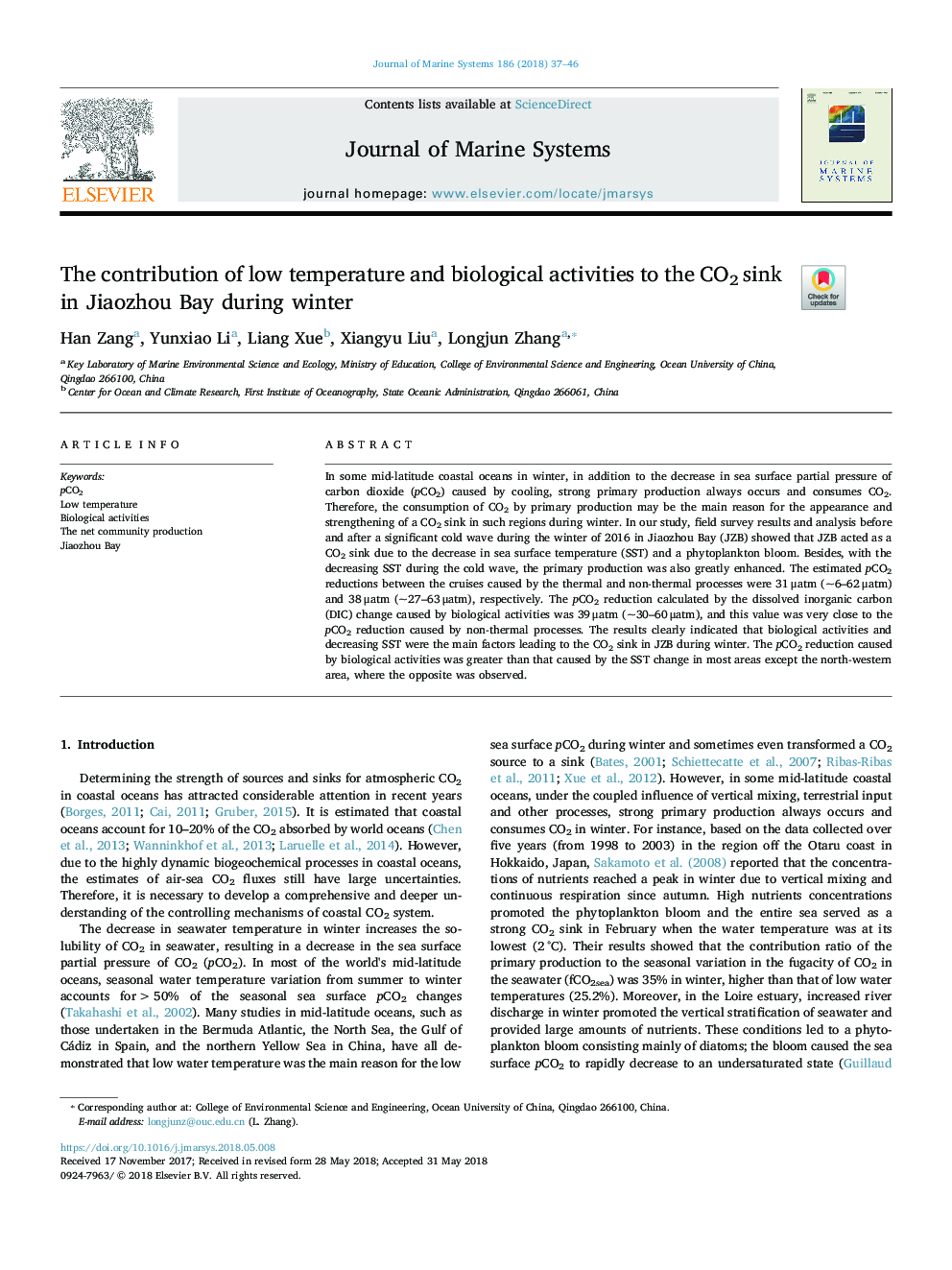| Article ID | Journal | Published Year | Pages | File Type |
|---|---|---|---|---|
| 8885910 | Journal of Marine Systems | 2018 | 10 Pages |
Abstract
In some mid-latitude coastal oceans in winter, in addition to the decrease in sea surface partial pressure of carbon dioxide (pCO2) caused by cooling, strong primary production always occurs and consumes CO2. Therefore, the consumption of CO2 by primary production may be the main reason for the appearance and strengthening of a CO2 sink in such regions during winter. In our study, field survey results and analysis before and after a significant cold wave during the winter of 2016 in Jiaozhou Bay (JZB) showed that JZB acted as a CO2 sink due to the decrease in sea surface temperature (SST) and a phytoplankton bloom. Besides, with the decreasing SST during the cold wave, the primary production was also greatly enhanced. The estimated pCO2 reductions between the cruises caused by the thermal and non-thermal processes were 31â¯Î¼atm (~6-62â¯Î¼atm) and 38â¯Î¼atm (~27-63â¯Î¼atm), respectively. The pCO2 reduction calculated by the dissolved inorganic carbon (DIC) change caused by biological activities was 39â¯Î¼atm (~30-60â¯Î¼atm), and this value was very close to the pCO2 reduction caused by non-thermal processes. The results clearly indicated that biological activities and decreasing SST were the main factors leading to the CO2 sink in JZB during winter. The pCO2 reduction caused by biological activities was greater than that caused by the SST change in most areas except the north-western area, where the opposite was observed.
Related Topics
Physical Sciences and Engineering
Earth and Planetary Sciences
Oceanography
Authors
Han Zang, Yunxiao Li, Liang Xue, Xiangyu Liu, Longjun Zhang,
